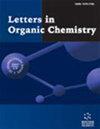Selective Hydrogenation Reaction: Utilizing a Microreactor for Continuous Flow Synthesis of Nickel Nanoparticles
IF 1
4区 化学
Q4 CHEMISTRY, ORGANIC
引用次数: 0
Abstract
Introduction:: In this investigation, we employed a continuous flow reactor to synthesize nickel (Ni) nanoparticles exhibiting uniform size distribution and excellent stability. Our focus centered on exploring the impact of reactant dilution and flow rate on the synthesis process. Result:: It was observed that the optimization of these parameters played a pivotal role in obtaining small-sized Ni nanoparticles. Specifically, we achieved successful synthesis using a solution of 0.00025 M NiCl2·6H2O and 0.002 M NaBH4, with a flow rate of 25 mL/h. The resulting Ni nanoparticles were effectively coated with the CTAB surfactant, as confirmed through thorough analysis using TEM and PSD techniques. Additionally, the interaction between the surfactant and nanoparticles was verified via FTIR analysis. We subjected them to high-pressure alkene hydrogenation to assess the catalytic activity of the synthesized Ni nanoparticles. Method:: Encouragingly, the Ni nanoparticles exhibited excellent performance, producing hydrogenated products with high yields. Moreover, we capitalized on Ni nanoparticles' catalytic effect for synthesizing two natural compounds, brittonin A and dehydrobrittonin A. Remarkably, both compounds were successfully isolated in quantifiable yields. This synthesis protocol boasted several advantages, including low catalyst loading, omission of additives, broad substrate scope, straightforward product separation, and the ability to recover the catalyst up to eight times. In summary, this study effectively showcased the potential of continuous flow reactor technology in synthesizing stable and uniformly distributed nanoparticles. Conclusion:: Additionally, it highlighted the effectiveness of Ni nanoparticles as catalysts in various chemical reactions. The findings from this study hold significant implications for developing more efficient and sustainable chemical synthesis protocols.选择性氢化反应:利用微反应器连续流合成镍纳米粒子
简介:.....:在这项研究中,我们采用了一种连续流反应器来合成镍(Ni)纳米粒子,这种粒子具有均匀的尺寸分布和出色的稳定性。我们的重点是探索反应物稀释和流速对合成过程的影响。结果::通过观察发现,这些参数的优化在获得小尺寸镍纳米粒子的过程中发挥了关键作用。具体来说,我们使用 0.00025 M NiCl2-6H2O 和 0.002 M NaBH4 的溶液,以 25 mL/h 的流速成功合成了镍纳米粒子。通过使用 TEM 和 PSD 技术进行全面分析,我们证实所制备的镍纳米粒子有效包覆了 CTAB 表面活性剂。此外,我们还通过傅立叶变换红外光谱分析验证了表面活性剂与纳米颗粒之间的相互作用。我们将其用于高压烯烃氢化,以评估合成的镍纳米粒子的催化活性。方法:令人鼓舞的是,镍纳米粒子表现出了优异的性能,能以高产率生成氢化产物。此外,我们还利用镍纳米颗粒的催化作用合成了两种天然化合物--布里托宁 A 和脱氢布里托宁 A。该合成方案具有多个优点,包括催化剂负载量低、无需添加剂、底物范围广、产物分离简单以及催化剂可回收八次。总之,这项研究有效地展示了连续流反应器技术在合成稳定、分布均匀的纳米颗粒方面的潜力。结论此外,该研究还强调了镍纳米粒子作为催化剂在各种化学反应中的有效性。本研究的发现对开发更高效、更可持续的化学合成方案具有重要意义。
本文章由计算机程序翻译,如有差异,请以英文原文为准。
求助全文
约1分钟内获得全文
求助全文
来源期刊

Letters in Organic Chemistry
化学-有机化学
CiteScore
1.30
自引率
12.50%
发文量
135
审稿时长
7 months
期刊介绍:
Aims & Scope
Letters in Organic Chemistry publishes original letters (short articles), research articles, mini-reviews and thematic issues based on mini-reviews and short articles, in all areas of organic chemistry including synthesis, bioorganic, medicinal, natural products, organometallic, supramolecular, molecular recognition and physical organic chemistry. The emphasis is to publish quality papers rapidly by taking full advantage of latest technology for both submission and review of the manuscripts.
The journal is an essential reading for all organic chemists belonging to both academia and industry.
 求助内容:
求助内容: 应助结果提醒方式:
应助结果提醒方式:


